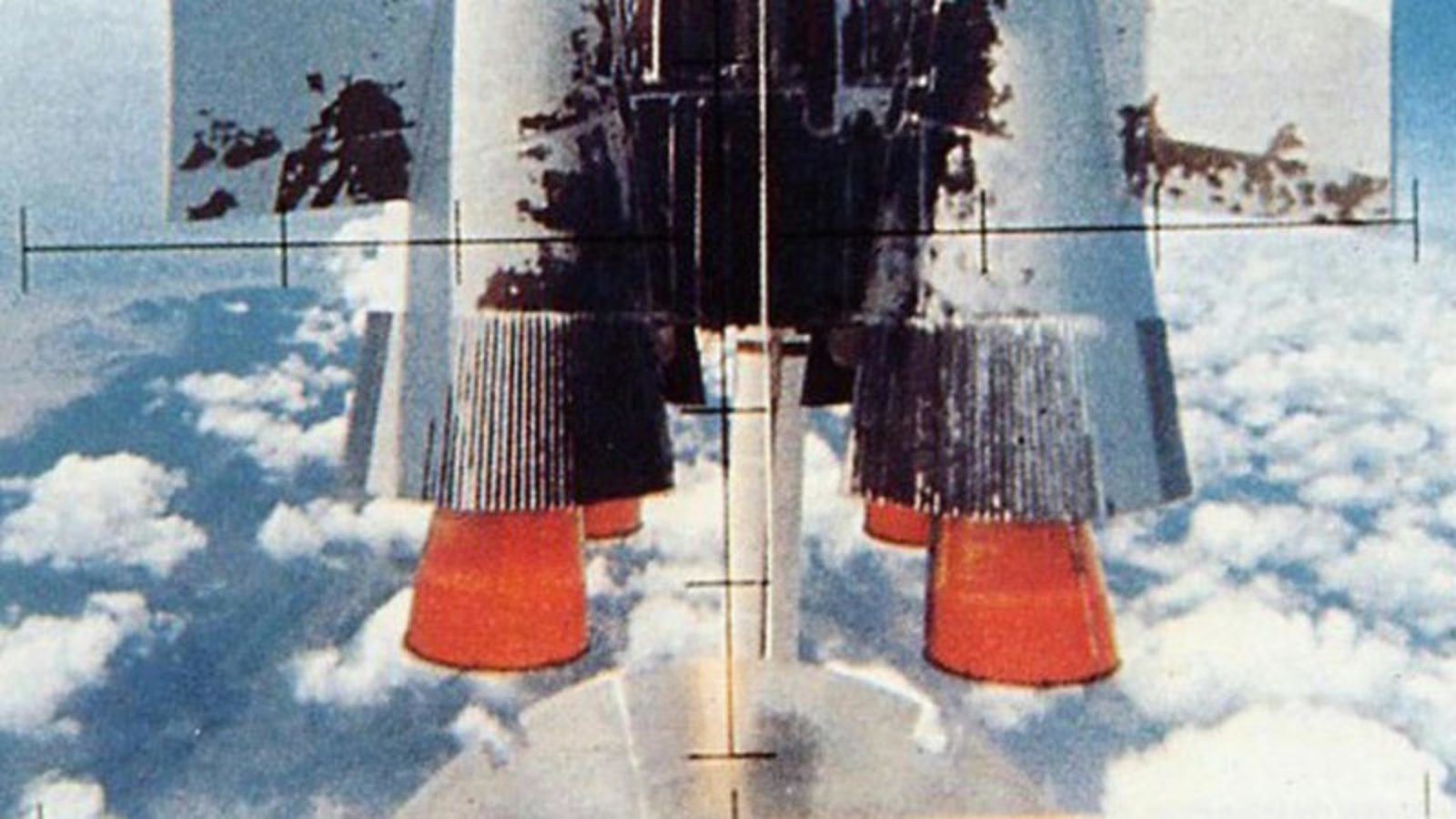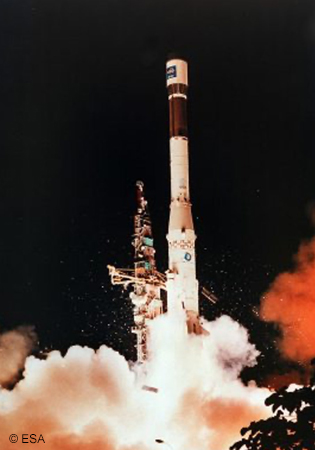
Rotate your tablet
for a better experience


Rotate your tablet
for a better experience

The Ariane 3 story starts back in 1978, when it was decided to launch the development of a more powerful version of Ariane 1, capable of orbiting satellites that were becoming heavier than ever.
All three stages of the launcher were improved to meet this challenge. For example, the first stage engine thrust-frame was strengthened to attach the solid-propellant strap-on boosters (called PAPs, standing for Propulseurs d’Appoint à Poudre, because at that time; the terminology for solid fuel was “powder”, not “propellant”.)
With its two solid boosters, the launcher became Ariane 3. Without boosters, the launch vehicle was called Ariane 2.
Kourou, 4 August 1984. An Ariane 3 (Flight 10) lifts off for the first time. Equipped with the SYLDA Ariane dual launch system, this flight placed the European ECS 2 communications satellite (built by British Aerospace for the European Space Agency ESA) and the French Telecom 1A communications satellite (built by Matra) into orbit.
On this first flight, Ariane 3 beat the record for the heaviest civil payload placed into orbit previously held by the Americans, with a mass value of 2,576kg.
In its 11 flights, Ariane 3 set new records for the largest combined payload placed into GTO (Flight 10 on August 4, 1984, Flight 13 on May 8, 1985, and Flight 25 on September 8, 1988) and for the largest single satellite placed into geostationary transfer orbit (GTO) (Flight 32, the last Ariane 3 flight, July 12, 1989).

Flight 32, the last outingfor Ariane 3,July 12, 1989, orbiting the Calypso satellite, and another record: the largest single satellite placed into geostationary transfer orbit (GTO).